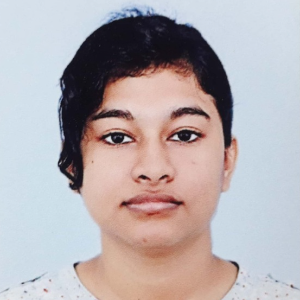Title : A revolution or surrender: The success and failures of tissue engineering and regenerative medicine
Thomas J Webster, Brown University, United States
In the 1990s, tissue engineering promised to change healthcare forever. Images on the cover of journals showed humans with almost every organ regenerated using tissue engineering approaches. From bone to skin to the brain to the heart, tissue engineering was destined to change th [....] » Read More








































Title : RNA activation in cancer and rare genetic diseases
Nagy Habib, Imperial College London, United Kingdom
Small activating RNAs (saRNA) are double stranded 21 nucleotide RNA that either target promoters or enhance genes leading to mRNA upregulation. saRNAs can be delivered with liposomes into the systemic circulation or subcutaneously by conjugation with aptamers or GalNAC. [....] » Read More
Title : Novel molecular mechanisms and therapeutic options for pulmonary hypertension
Yong Xiao Wang, Albany Medical College, United States
Pulmonary hypertension (PH) is a common and devastating lung disease. The current primary medications for this disease are to use non-specific vasodilators, but patients do not always respond well to non-specific vasodilators. Voltage-dependent potassium channels and store-operat [....] » Read More
Title : Characterization of Mesenchymal Stem Cells (MSCs) and their use in the treatment of COVID-19
Vasiliki E Kalodimou, European University-Cyprus Ltd, Germany
Worldwide more than 49 million individuals have been infected with severe acute respiratory syndrome corona virus 2 (SARS-CoV-2), the corona virus causing COVID-19. From the World Health Organization, as of November 6, 2020, a little over 1.2 million deaths have been reported glo [....] » Read More
Title : Biofabrication of functional human intestinal tissue with villi and crypts using high-resolution 3D printing technique
Lindy Jang, Lawrence Livermore National Laboratory, United States
The epithelium of the small intestine is composed of villi that protrude into the gut lumen like fingers and crypts that are epithelial invaginations. The architecture of villi and crypts is critical to maintain intestinal homeostasis and renewal. In recent years, researchers hav [....] » Read More
Title : IPSC-MSCs for cell and gene therapy in cartilage repair
Tong Ming Liu, Institute of Molecular and Cell Biology (IMCB), Singapore
Human mesenchymal stem cells (MSCs) represent the most used stem cells for clinical application, which have been used in over 1500 clinical trials to treat over 30 diseases due to multilineage differentiation potential, secretome and immunosuppression. The clinical application of [....] » Read More
Title : Laminin peptides attached to hydrogels may serve as flexible scaffolds for tissue repair
Georgios Koliakos, Biohellenika Biotechnology, Greece
Tissue engineering and regenerative medicine seek innovative solutions to promote effective tissue regeneration. Laminins, essential components of the extracellular matrix, possess unique cell-adhesive properties crucial for tissue development and repair. A series of laminin deri [....] » Read More
Title : Next generation 3D-bioprinting through superior software modelling
Jordan Copner, Copner Biotech Ltd, United Kingdom
The 3D-bioprinting industry has witnessed significant breakthroughs and advancements through the last 10 years, including but not limited to, novel methods of material deposition and highly tuneable bioinks for printing. Whilst the industry has enjoyed a clear advancement in hard [....] » Read More
Title : Ultra-high throughput multiphoton 3D bio-printer
Linas Jonusauskas, Vital3D Technologies, Lithuania
Fast development in the field of 3D bio-printing showed immense promise in the capability to produce fully functional organs for in vitro testing or even in vivo implantation. However, while there is an abundance of methodologies that can be employed in this role, the challenge o [....] » Read More
Title : Rat kidney decellularization in purpose of development of tissue engineering scaffold and recellularization with human mesenchymal stem cells derived from human umbilical cord
Charalampos Oikonomidis, Biomedical Research Foundation Academy of Athens, Greece
Chronic kidney disease is a prevalent global issue as the 18th leading cause of death worldwide. The escalating demand for kidney transplants has prompted the scientific community to explore alternative strategies. In such a way, one promising alternative strategy to address the [....] » Read More
Title : Biodegradable electrospun PCL/GEL nanofibers: Effect of tubular halloysite on physical and biological properties
Viera Khunova, Slovak University of Technology, Slovakia (Slovak Republic)
Tubular halloysite (HNT) is environmentally friendly, biocompatible, naturally occurring aluminosilicate clay with unique structure and properties. In this study the effect of HNT structure on properties of biocompatible electrospun nanofibers based on blend of hydrophobic, synth [....] » Read More
Title : Biodegradable ultrathin nanofibrous membranes for retinal tissue engineering
Hana Studenovska, Institute of Macromolecular Chemistry, CAS, Czech Republic
Degenerative retinal diseases such as age-related macular degeneration (AMD) impair the function of the retinal pigment epithelium (RPE), which results in failure of photoreceptors and loss of vision. Replacement of the RPE by a transplantation of retinal cells via nanofibrous me [....] » Read More
Title : In vitro and in vivo osteogenic potential of bioactive glass PVA hybrid scaffolds colonized by mesenquimal stem cells
Viviane Gomide Kawa, Pontifical Catholic University of Minas Gerais, Brazil
Bioactive glass/polymer composites are promising materials for bone tissue engineering. In this project has developed porous hybrid scaffolds comprised of 50% polyvinyl alcohol/50% bioactive glass with a 70%SiO2–30%CaO composition. Prior studies have also shown the adequate [....] » Read More
Title : Optimizing electrospun biodegradable small diameter vascular graft via 3D printing reinforcement achieved a long-term patency neotissue formation in a small animal model
Obiweluozor Francis Onyekachi, Chonnam University Hospital and Medical school, Korea, Republic of
Step-wise increase in cases of patients with cardiovascular disease globally has propelled scientist in this area to develop improved commercially available artificial blood vessel with large diameter for reducing adverse responds that drive acute thrombosis and the accompanying [....] » Read More
Title : A long-acting bioactive patch consisting of copolymers with inherent antimicrobial properties
Argyro Niti, Biohellenika Biotechnology, Greece
Statement of the Problem: Wound healing takes place in successive but overlapping stages involving cells, bioactive agents and the extracellular matrix. The last decades, a number of "bioactive" patches have been developed inspired by the normal mechanisms of healing, i [....] » Read More
Title : Bioengineering of identifying transcriptional elements driving MMP13 gene in skeletal development
Sara Ibrahim AlSalhi, University of Liverpool, United Kingdom
MMP13 is a primary catabolic factor involved in cartilage degradation through its ability to cleave type II collagen. Transcriptionally, MMP13 is regulated by 2 main elements: proximal prompter and distal enhancers by both molecular and epigenetic factors. The&nbs [....] » Read More
Title : Strategy to promote neovascularization and fibrinolysis in vascular disease
Darwin Eton, Vasogenesis Inc, United States
Neovascularization (NV) via growth of collateral arteries (arteriogenesis) and capillaries, arterioles, and venules (angiogenesis) becomes impaired as ischemia from vascular disease progresses. Our premise is that overcoming hemodynamic and cellular obstacles to NV should yield a [....] » Read More
Title : Influence of exposure to pesticides on telomere length and pregnancy outcome: Diethyl phosphates but not dimethyl phosphates are associated with accelerated telomere attrition in a palestinian cohort
Jaber Jamil Haj Ali, Consulting Medical Lab, State of Palestine
Exposure to environmental pesticides during pregnancy is associated with adverse health outcomes such as low birth weight and impaired neuro-development. In this study, we assessed maternal leukocyte telomere lengths (TL) in Palestinian pregnant women and compared the data with u [....] » Read More
Title : Cellular conflict, degenerative disease onset, and nutritional demands: A novel insight into the role of single-cell nutrients as an adjuvant to cell therapy
Samar Hassab Allah Kassem Mohamed, October 6 University, Egypt
As the incidence of degenerative disease increases with age, we argue that conditions are related to nutritional defects in a particular organ. As not all genetic risk factors trigger diseases in old age, other factors likely intervene. Many recent studies have revealed nutrition [....] » Read More
Title : The role of efferocytosis in stem cell-based tissue engineering
Seyed Mohammad Gheibihayat, Shahid Sadoughi University of Medical Sciences, Iran (Islamic Republic of)
Tissue engineering is a rapidly evolving field that aims to develop new approaches for tissue regeneration using a combination of cells, growth factors, and biomaterials. Stem cells, in particular, hold great promise for tissue engineering due to their ability to differentiate in [....] » Read More
Title : Exploration of the cGMP-PKG-dependent transcriptome in photoreceptors via spatial capture technology
Jiaming Zhou, The Technology Innovation Institute (TII), United Arab Emirates
Retinitis pigmentosa (RP) refers to a group of inherited disorders that lead to the dysfunction and death of photoreceptors, which causes progressive vision loss, and there is in principle no treatment available. The cGMP-PKG system has been suggested as a disease driver in sever [....] » Read More
Title : NIR-degradable and biocompatible hydrogels derived from hyaluronic acid and coumarin for drug delivery and bio-imaging
Kwon Taek Lim, Pukyong National University, Korea, Republic of
In this work, bioorthogonal and photodegradable hydrogels derived from norbornene (Nb) functionalized hyaluronic acid and a water soluble coumarin-based cross-linker possessing terminal tetrazine (Tz) groups, were developed for NIR-responsive release of doxorubicin (DOX). The inv [....] » Read More
Title : Corneal tissue engineering at a glance
Raihaan Biju, Imperial College London, United Kingdom
Tissue engineering and regenerative medicine (TERM) has been growing rapidly and is a promising approach to address the limitations of traditional corneal transplantation and revolutionise corneal therapy. This poster provides an overview of what corneal tissue comprises of and w [....] » Read More
Title : Preliminary data of adipose stem cells and stem cells markers by flow cytometry and their use in regenerative medicine-plastic surgery
Maria Toumazou, EUC School of Medicine, Germany
In the field of regenerative medicine, basic research and preclinical studies have been conducted to overcome clinical shortcomings with the use of mesenchymal stem cells. They are present in adult tissues, including bone marrow and adipose tissue. For many years, bone marrow-der [....] » Read More
Title : MicroRNA-155 in mononuclears as a predictor of acute kidney injury in patients with ST-elevation myocardial infarction
Oleksandr Sopko, ACVC Regular Member, Ukraine
Acute kidney injury (AKI) in patients with ST-elevation myocardial infarction (STEMI) is a substantial problem, particularly, its prediction and therapy approaches. Earlier we analyzed the change of microRNAs subset in different blood fractions (plasma, platelets, mononuclears), [....] » Read More